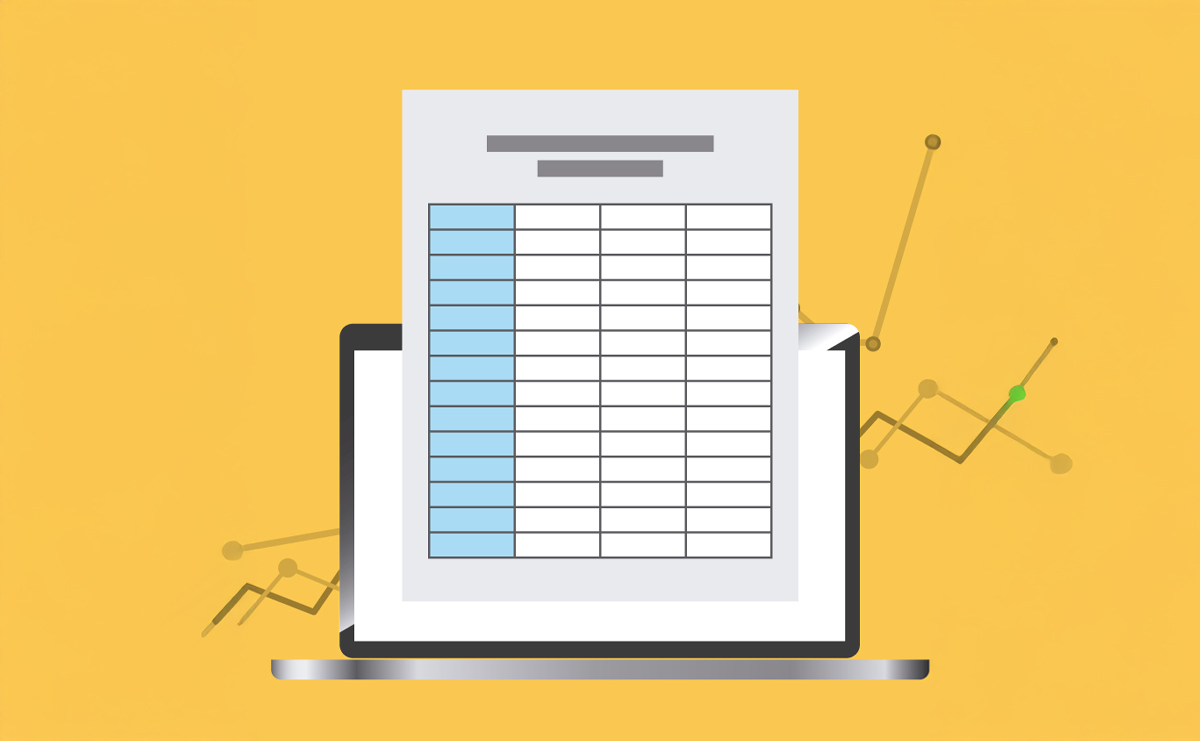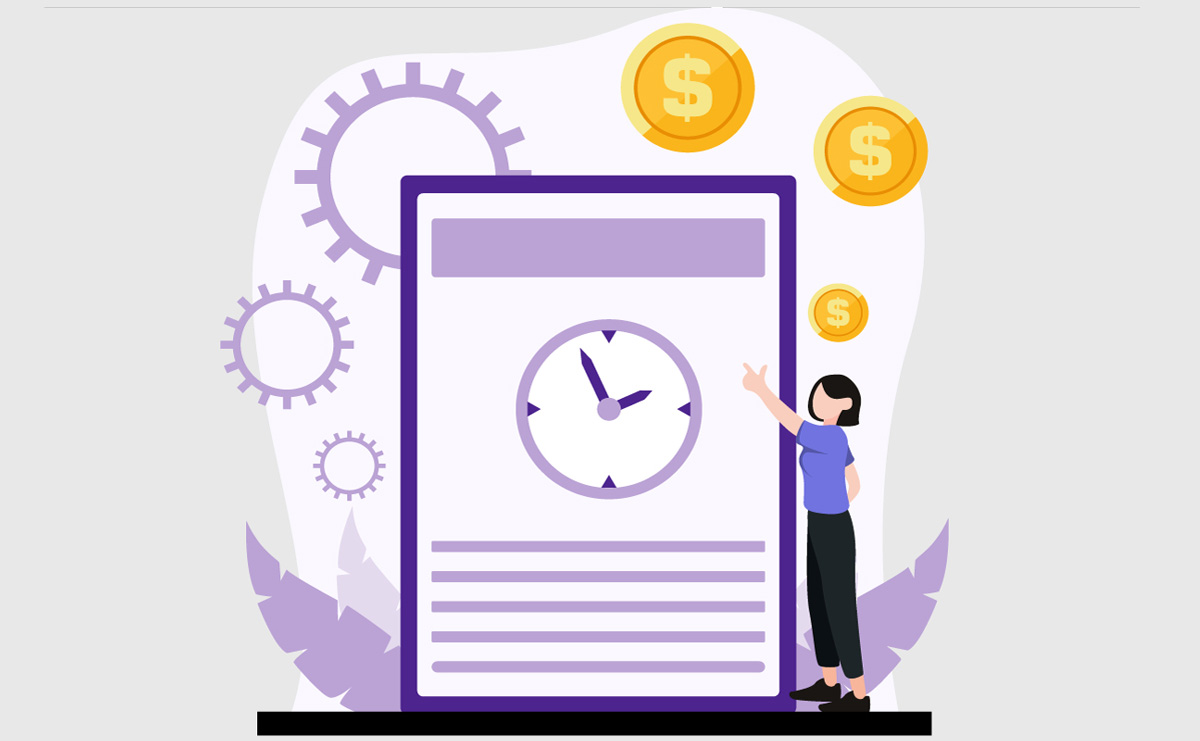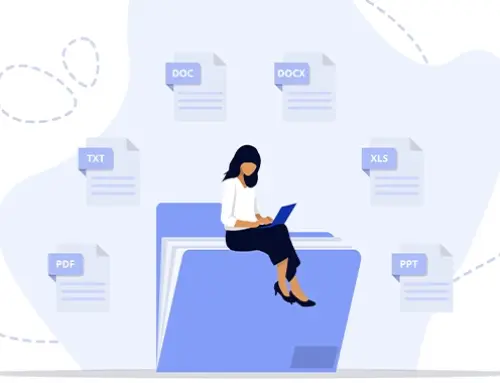Contents
The Ultimate Upgrade to the Traditional Attorney Billing Chart
The attorney billing chart—commonly known as the billable hour chart or legal billing chart—has long been integral to law firm operations, serving as a straightforward tool to convert task durations into standardized billing increments. Typically segmented into six-minute blocks (each equating to 0.1 hours), it simplifies time-tracking and billing consistency. Yet, despite its widespread use, the traditional attorney billing chart has significant drawbacks: it demands manual logging that interrupts workflow, leads to memory-based inaccuracies, and fosters costly administrative overhead. Furthermore, reliance on manual entry often results in underbilling, ethical dilemmas, and client dissatisfaction stemming from unclear billing practices such as block billing.
Recognizing these critical limitations, forward-thinking law firms increasingly turn to modern alternatives—automated time-tracking software and alternative fee arrangements (AFAs)—to streamline operations, enhance compliance, and boost profitability. This article examines why these innovative approaches surpass the traditional attorney billing chart, offering immediately actionable insights to elevate your firm’s efficiency, transparency, and revenue.
What Is a Traditional Attorney Billing Chart (or Billable Hour Chart)?
An attorney billing chart (or billable hour chart) is a reference table that converts time spent on a task into standard billing increments. Law firms historically bill in fixed increments (often six-minute blocks, which equal 0.1 hours) for clarity and ease of calculation. For example, a 7-minute phone call is rounded up to 0.2 hours on the timesheet. The legal billing chart lists ranges of minutes and their corresponding fractions of an hour – for instance, 1–6 minutes = 0.1, 7–12 minutes = 0.2, and so on. This standardized template helps attorneys and support staff quickly translate raw minutes into billable units, ensuring consistency on invoices. It’s simple to use and easy for clients to understand because it presents time charges in a uniform, decimal format. Many law firms have relied on such billable hour charts for decades, often printing them out or affixing them to desks as a “cheat sheet” for manual time entry. The six-minute increment became an industry standard because it strikes a balance – smaller increments (like one-minute blocks) create excessive administrative work.
In comparison, larger increments (like fifteen minutes) can lead to overbilling for short tasks. In summary, the traditional attorney billing chart is a fundamental yet essential tool from the era of paper timesheets and early spreadsheets, designed to make hourly billing more systematic and transparent.

Limitations of the Traditional Legal Billing Chart
Using a billable hour chart may be better than pure guesswork, but it still presents efficiency and accuracy issues. First, it requires attorneys or staff to log time manually, which often means interrupting their workflow or jotting notes to enter later. If lawyers wait until the end of the day (or week) to record their hours, human memory errors creep in – and lost time is practically guaranteed. Studies by the American Bar Association (ABA) indicate that waiting until the end of the day to record time can result in attorneys undercounting 10–15% of their billable hours due to forgotten tasks. A 24-hour delay in time entry can result in approximately 25% of billable work not being recorded, and waiting a whole week can eliminate 50% of the billable hours that were worked. Table 1 below highlights how delaying time entries directly erodes revenue: even “minor” delays compound into substantial lost billings (which no client will ever remind you to charge for). In short, relying on memory is costly.
Table 1 – Impact of Time-Tracking Delay on Billable Hours (ABA findings on lost billable time)
| Time Entry Recorded Late | Estimated Billable Hours Lost |
| End of workday (same day) | ≈ 10–15% time lost |
| Next day (24-hour delay) | ≈ 25% time lost |
| End of week (5–7 days later) | ≈ 50% time lost |
Secondly, the traditional billing hour chart itself does nothing to prevent human error in calculations. Manually totaling dozens of 0.1-hour entries (and ensuring they match the actual work done) is error-prone and tedious. It’s easy to make arithmetic mistakes or misread the chart under time pressure. Such errors can result in underbilling (which quietly saps firm revenue) or overbilling (which can trigger client disputes and ethical issues). Remember that ABA Model Rule 1.5 requires legal fees to be reasonable, which implicitly demands accurate and contemporaneous time records. A partner reviewing a vague or inflated timesheet after the fact may have to “write down” the billed hours to placate the client, negating the effort spent. Inconsistent use of the chart (or different rounding habits among lawyers) can also lead to compliance risks if some entries appear arbitrary. From a professional ethics standpoint, meticulous timekeeping isn’t just bean-counting – it’s part of a lawyer’s duty of candor in billing. A paper-based system relying on each individual’s diligence makes it harder to enforce firm-wide billing guidelines or audit the records for accuracy.
Third, traditional billing charts can inadvertently encourage outdated practices, such as block billing. Because the chart focuses on increments of time, an attorney might be tempted to bundle multiple tasks into one block (e.g., “Research and drafting – 3.0 hours”) to ensure the total hours align with the chart. This lack of detail can undermine client trust – a client who sees a few large time blocks on an invoice might question their accuracy. Without detailed, separate entries, the client cannot tell how the time was spent, and that opacity “doesn’t inspire much confidence.” Many corporate clients and courts frown on block billing for this reason. While a legal billing chart standardizes the increments, it doesn’t standardize good descriptive practices. It’s still up to the lawyer to write clear entries and to record every billable task. In a busy firm, that consistency often falls short.
Finally, there’s an opportunity cost to using manual charts: the non-billable time spent on administrative tracking. Every minute an attorney spends calculating time entries or double-checking a spreadsheet is time not spent on client work or business development. For a small firm with limited staff, the cumulative hours spent each month on billing chores (assembling timesheets, verifying the 0.1s and 0.2s, preparing invoices) can easily reach double-digit hours. That is wasted overhead that drags down productivity.
In essence, the traditional attorney billing chart, while simple, cannot solve the core challenges of timekeeping: capturing all billable work, ensuring accuracy, maintaining compliance, and minimizing overhead. It often falls short in each of these areas. The good news is that modern solutions directly target these pain points.
Modern Time-Tracking Software: A Superior Alternative
The best alternative to the old manual billing chart is to adopt modern time-tracking and billing software, such as RunSensible, designed specifically for law firms. Instead of relying on pens, paper, and memory, attorneys can use specialized digital tools that automatically track and calculate billable hours. These tools effectively replace traditional billing charts by handling time conversions and records in real-time. For example, many legal practice management systems now let you start a timer with one click when you begin a task (writing an email, drafting a motion, etc.) and stop it when you’re done. The software will log the exact duration and automatically convert it into the correct increment for you, eliminating the need for manual calculations. If you still bill in six-minute units, the program will round and tally time entries according to that rule across the entire firm, enforcing consistency. In short, the software builds the “billing chart” logic into the system, so you no longer need a separate cheat sheet.
Crucially, modern time-tracking solutions also address the biggest failure of manual methods: missed time. Good software such as RunSensible makes it easy – even automatic – to record every billable minute, ensuring it doesn’t slip through the cracks. Some applications run in the background on your computer or phone and can passively capture the work you perform. For instance, they detect if you spend 15 minutes on a document or 5 minutes on a phone call and prompt you to add that time to a client file. Many tools integrate with email and calendars, so if you draft an email or attend a scheduled meeting, the system will remind you, “This looks like a billable activity – do you want to record it?”. By accounting for these small increments that lawyers often forget, automated time trackers drastically reduce the leakage of billable hours. Law firms that have implemented automatic time-tracking software have reported capturing around 34% more billable time on average per attorney compared to their manual tracking methods. This corresponds to tens of thousands of dollars in additional revenue per lawyer each year (one case study showed approximately $134,000 more per fee-earner annually) simply by not losing billable work that was actually completed. Such gains directly improve a firm’s bottom line without requiring anyone to work more hours – they’re recouping revenue that would have been lost to imperfect memory and manual logs.
Table 2 below contrasts the traditional manual approach versus modern automated systems on key performance factors. As shown, transitioning to a software-based timekeeping method yields improvements across the board – from increased hours billed (higher utilization) to reduced errors and disputes.
Table 2 – Manual Time Entry (Billing Chart) vs. Automated Time-Tracking Software
| Aspect | Traditional Manual System (Chart & Memory) | Modern Automated System (Legal Time-Tracking Software) |
| Average billable hours captured | Low – only about 35–40% of work hours get billed on average (many tasks go unrecorded). | High – significantly more hours captured; firms see ~34% uptick in billables after adopting automatic tracking. |
| Time spent on billing admin | High – lawyers must stop to log time, do manual calculations, and compile invoices (hours of non-billable work each month). | Low – software automates time capture and invoice generation, saving considerable admin time. |
| Billing accuracy and errors | Inconsistent – prone to omissions or rounding mistakes if relying on memory and manual math. Errors can lead to overbilling or underbilling. | Precise – automatic timers and built-in calculations eliminate math errors. Every entry is timestamped, and totals are computed for you, ensuring accurate bills. |
| Client transparency and trust | Variable – depends on the detail of descriptions. Reconstructed time entries may be vague, and clients might doubt block-billed hours (risk of disputes). | High – detailed, real-time records provide clear support for each charge. Software makes it easy to include descriptive entries. This clarity minimizes billing disputes and bolsters client trust. |
| Compliance and audit trail | Weaker – paper timesheets or spreadsheets rely on individual diligence; audits are labor-intensive and may find gaps. Harder to prove that all work was logged. | Strong – digital systems create a secure audit trail with timestamps and user logs. It’s easy to demonstrate compliance with ethical rules (ABA Model 1.5) by showing systematic, contemporaneous records. |
Beyond time-tracking itself, modern legal billing software often includes features that further streamline the billing process. For instance, many platforms can automatically generate invoices from the time entries at the end of a billing period. Instead of manually transferring numbers from a chart into an invoice template (and potentially making transcription errors), the software can produce a polished invoice with all time entries, descriptions, rates, and totals calculated. This not only saves time but also means invoices go out faster – which improves cash flow. (Firms that bill faster tend to get paid faster.) Some solutions can even schedule invoices and send recurring bills on your behalf. Also, today’s legal billing systems often integrate online payment options (such as credit cards and ACH), making it more convenient for clients to pay and reducing the collections cycle. The bottom line is that an integrated time-tracking and billing system cuts out the drudgery and delays associated with the traditional billing chart method. Lawyers can focus on practicing law while the software handles the minutiae of time calculation, formatting, and billing compliance.
Importantly, adopting such technology doesn’t have to be difficult – many modern tools have user-friendly interfaces (such as starting or stopping timers on a smartphone). They can be rolled out firm-wide with minimal training. The return on investment is clear: more billable time is captured, less overhead is incurred, fewer errors occur, and clients are happier. Indeed, a 2025 industry survey found that 24% of firms had implemented “passive” time-tracking software that logs work in the background, and more than half of those firms reported tangible time savings each month from these tools. Legal technology has explicitly evolved to solve the pain points of the billable hour system. In practice, the best alternative to an old-fashioned attorney billing chart is comprehensive legal timekeeping software that automates the chart’s function and adds a host of benefits on top.
Alternative Fee Arrangements: Beyond the Billable Hour
Adopting better time-tracking software will significantly improve efficiency for hourly billing. Still, some law firms are taking an even bigger step: reducing their reliance on the billable hour model altogether. Alternative fee arrangements (AFAs) are billing methods that diverge from the traditional hourly rate paradigm. These include flat fees (charging a set amount for a defined service), contingency fees (taking a percentage of any recovery, common in personal injury cases), subscriptions or retainers (a fixed monthly fee for ongoing services), and various hybrid models (such as capped fees or success bonuses). The appeal of AFAs is that they can provide more cost predictability for clients and sometimes better align the lawyer’s incentives with the client’s goals (for example, a flat fee incentivizes efficiency since the lawyer doesn’t earn more by dragging out the work).
In recent years, the use of alternative fees has increased. A 2022 ABA survey found nearly 60% of lawyers have used AFAs in at least some of their cases. Likewise, a 2024 industry report noted that 71% of law firms still offer hourly billing (the most common method), but flat fees and other arrangements are gaining ground, driven by client demand. About 71% of clients would prefer to pay a flat fee for legal services if given the option. One primary reason is the faster payment process: flat-fee bills tend to be paid more promptly, with studies showing that lawyers using flat fees are nearly twice as likely to collect payment immediately from clients compared to those billing hourly. Clients appreciate the certainty of a known cost, and law firms benefit from improved collection rates and potentially lower billing overhead (since tracking hours for the client’s sake is less critical with a flat fee).
That said, alternative fee arrangements are not a universal replacement for hourly billing. Many practice areas – especially litigation, complex transactions, or matters with unpredictable scope – still rely on hourly charges because the work is too variable to price upfront. Even in firms that offer AFAs, the billable hour often remains a significant portion of revenue. For example, large law firms report that the “vast majority” of their work is still billed hourly; even though AFAs have grown, they typically make up only a modest percentage of total matters at those firms. Small and mid-sized firms are generally more flexible and may use a mix of billing models, depending on the case type and client preference. The key is to choose the correct billing method for the situation: straightforward, repetitive work is well-suited to a flat fee, whereas a highly uncertain case is usually best handled on an hourly basis (with clear communication to the client). Table 3 provides a brief comparison of standard billing models and their pros and cons, illustrating when an alternative might be advantageous.
Final Thoughts
The attorney billing chart has long served as a cornerstone of law firm accounting, offering a simple yet standardized way to track and invoice time. Its clarity and accessibility made it a go-to tool for generations of legal professionals. However, as the legal industry faces increasing pressure to enhance accuracy, transparency, and efficiency, the limitations of this traditional model become more pronounced.
From memory-based time entries and administrative burdens to compliance concerns and client dissatisfaction, the conventional chart often undermines the very productivity it seeks to organize. Today’s legal landscape demands smarter solutions—ones that reduce errors, increase billables, and foster trust.
Modern time-tracking software has emerged as a robust answer to these demands. By automating the functions of a legal billing chart and capturing time in real time, these tools not only safeguard against revenue loss but also reinforce ethical billing standards. Similarly, the growing use of alternative fee arrangements (AFAs) reflects a broader shift toward client-centric, results-oriented pricing models.
Ultimately, the legal profession is at a crossroads: cling to outdated tools that compromise efficiency or embrace technology and innovation that align billing practices with the evolving needs of firms and their clients. Replacing the manual legal billing chart with intelligent systems is not just a technological upgrade—it’s a strategic decision that directly enhances profitability, professionalism, and performance.
It’s time to move beyond the cheat sheet. Let the billable hour chart evolve into a relic of the past, replaced by smarter, faster, and fairer ways to manage your time—and your value.
Simplify Your Legal Billing with RunSensible
Whether you are offering a flat fee lawyer service or billing by the hour, RunSensible is here to streamline your practice’s billing process. Our all-in-one legal software helps you manage flat fee and hourly billing with ease, giving you the flexibility to choose the best approach for each case. With features like automated time tracking, customizable invoicing, and seamless online payment integrations, RunSensible ensures you get paid faster and more accurately—every time. Ready to enhance your billing efficiency and client satisfaction? Start using RunSensible today and see how easy managing flat fee attorney services can be!
FAQs
What exactly does an attorney billable hours chart look like?
A traditional attorney billable hours chart is a simple table – typically with one column for minutes spent and another for the corresponding fraction of an hour. For example, 1–6 minutes = 0.1 hours, 7–12 minutes = 0.2 hours, and 13-60 minutes = 1.0 hours. Lawyers refer to it when recording time to ensure they convert minutes into tenths of an hour correctly. It’s a cheat sheet to standardize increments.
Why is relying on a billing chart and manual time entry inefficient?
The main inefficiency is that manual time entry relies on human effort and memory. Lawyers either have to stop what they’re doing to record each task in real-time or reconstruct their time logs later from memory – both scenarios have downsides. If you log time later, you’ll almost inevitably forget some tasks or underestimate durations, leading to lost billable hours (waiting even 24 hours can result in ~25% of work being unbilled).
How does legal time-tracking software replace the need for a billing chart?
Time-tracking software replaces the billing chart by automating time conversion and recordkeeping. You input your start and stop times (or use a built-in timer), and the software calculates the duration, rounding it to the preset billing increment for you. For example, if you work on a task from 10:00 to 10:18, the software will log 0.3 hours automatically (assuming a six-minute increment policy). You don’t have to consult any chart – the system knows the rules. It will compile all your time entries in one place, which you can then review and edit if needed.
What immediate steps can a small law firm take to improve billing efficiency and accuracy?
To improve billing efficiency and accuracy, start by adopting legal time-tracking software if you haven’t already. Even a basic platform with timers and automated calculations can significantly reduce administrative time and minimize lost billable hours. Make it a firm-wide policy to record time entries contemporaneously—ideally in real time, but at a minimum, daily. Consistency in how you describe billable work is equally important. Standardize descriptions and invoicing practices by using templates for common tasks, and train staff to write clear, detailed entries (avoiding vague lines like “Legal services”). Monitor key metrics such as utilization rate (how much of the workday is billed) and realization rate (the percentage of billed time actually collected) to identify trends, spot inefficiencies, and make informed improvements.
References
Disclaimer: The content provided on this blog is for informational purposes only and does not constitute legal, financial, or professional advice.







